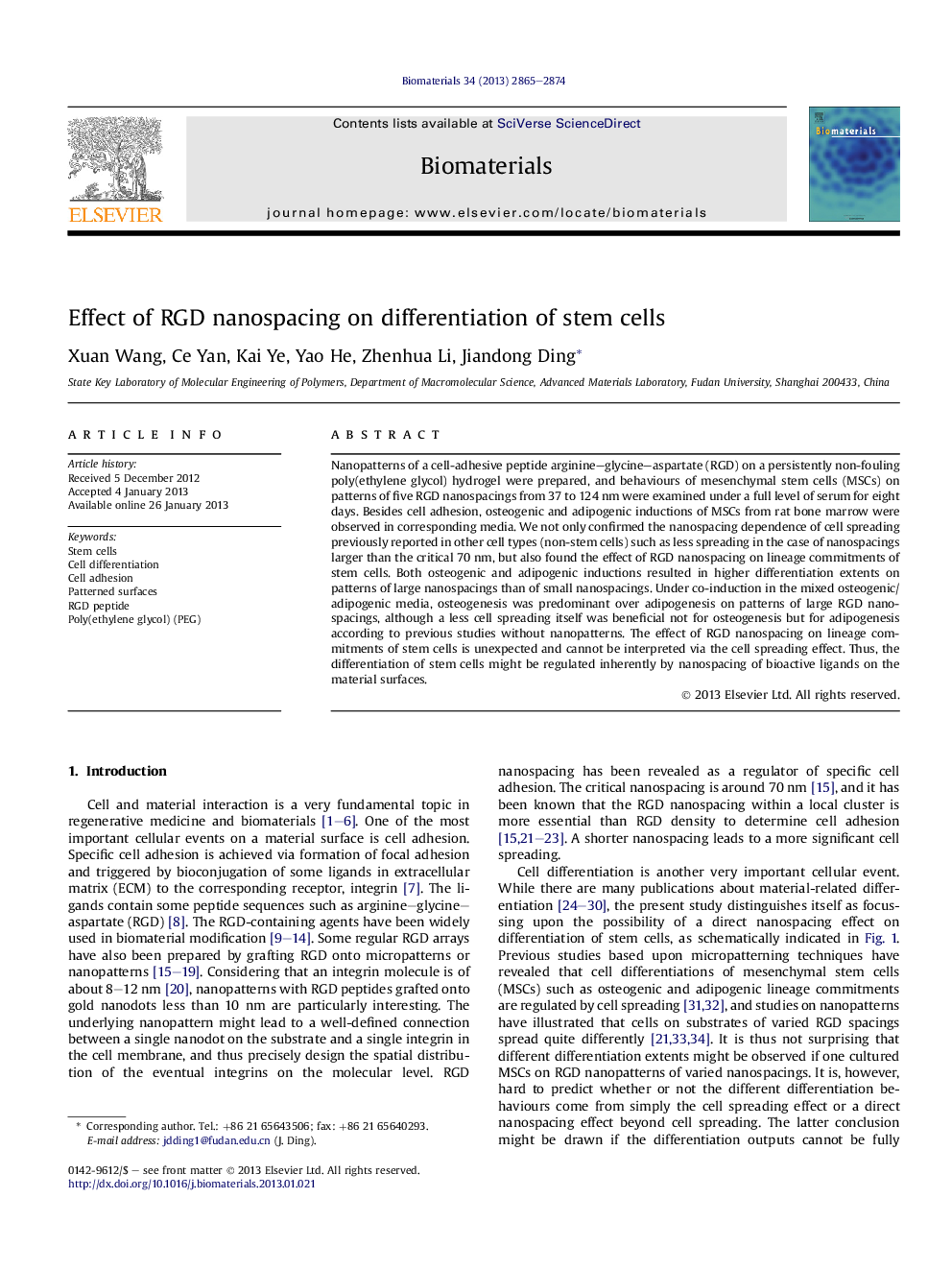| Article ID | Journal | Published Year | Pages | File Type |
|---|---|---|---|---|
| 6252 | Biomaterials | 2013 | 10 Pages |
Nanopatterns of a cell-adhesive peptide arginine–glycine–aspartate (RGD) on a persistently non-fouling poly(ethylene glycol) hydrogel were prepared, and behaviours of mesenchymal stem cells (MSCs) on patterns of five RGD nanospacings from 37 to 124 nm were examined under a full level of serum for eight days. Besides cell adhesion, osteogenic and adipogenic inductions of MSCs from rat bone marrow were observed in corresponding media. We not only confirmed the nanospacing dependence of cell spreading previously reported in other cell types (non-stem cells) such as less spreading in the case of nanospacings larger than the critical 70 nm, but also found the effect of RGD nanospacing on lineage commitments of stem cells. Both osteogenic and adipogenic inductions resulted in higher differentiation extents on patterns of large nanospacings than of small nanospacings. Under co-induction in the mixed osteogenic/adipogenic media, osteogenesis was predominant over adipogenesis on patterns of large RGD nanospacings, although a less cell spreading itself was beneficial not for osteogenesis but for adipogenesis according to previous studies without nanopatterns. The effect of RGD nanospacing on lineage commitments of stem cells is unexpected and cannot be interpreted via the cell spreading effect. Thus, the differentiation of stem cells might be regulated inherently by nanospacing of bioactive ligands on the material surfaces.
